As Solar Impulse 2 sets off on its long-awaited circumnavigation "without a drop of fuel", we look at some of the experimental aircraft that have paved the way for this milestone flight.
1 Gossamer Albatross
The first successful human powered aircraft – demonstrating take-off, controlled flight and landing, and in the process winning in 1977 the first of the Royal Aeronautical Society’s Kremer prizes – was Gossamer Condor, designed and built by Aerovironment founder Paul MacCready and now displayed in the Smithsonian’s National Air and Space Museum in Washington DC (pictured). But the moment that really captured the popular imagination came two years later, when MacCready’s team bagged another Kremer prize by crossing the English Channel in Gossamer Albatross. As Aeroviroment describes it, the main differences between the two aircraft were a reduced wing area and shorter wing chord on the 32kg Albatross, along with the switch from an aluminium main structure to carbon fibre-reinforced plastics. The pilot both times was Bryan Allen, a cyclist with hang glider experience, who recalls: “The initial construction and load-testing of the Albatross components was particularly interesting, since carbon fibre was at that time a somewhat exotic material and there was very little practical knowledge of how to craft parts out of it.” Subsequent moves to swap human power for solar – not to mention aviation generally and many other industries – clearly owe a lot to this project.
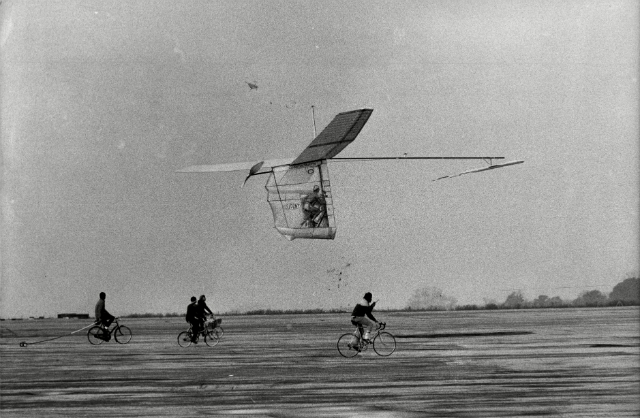
Gossamer Albatross
Rex Features

Gossamer Condor
Eric Long/National Air and Space Museum/Smithsonian Institution
2 Daedalus
Interest in human powered flight didn’t end with Albatross. A group of Massachusetts Institute of Technology and NASA researchers went on pushing lightweight and super-efficient design to create Daedalus, named after the mythical Greek with wax-and-feather wings and piloted by a real, modern Greek cycling champion who in 1988 flew the machine from Crete to Santorini. At nearly 4hrs and just short of 200km, the endurance records stand to this day. The project led to the creation of Aurora Flight Sciences, which continues to partner NASA on advanced projects.

Daedalus
NASA
3 Gossamer Penguin
A scaled down version of Albatross, MacCready’s Penguin substituted an electric motor for pedals. First flights were powered by a 28-cell NiCad battery pack, but later featured a 541W solar panel. A 1980 public demonstration flight of 3.14km at NASA’s Dryden Flight Research Center – recently renamed after Neil Armstrong – showed the potential of solar power.
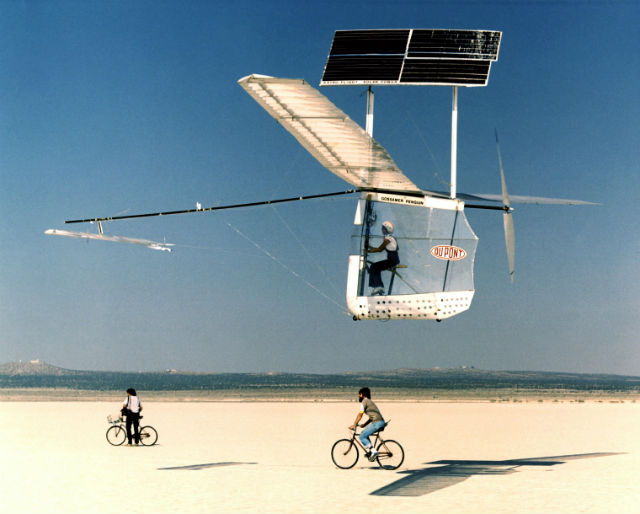
Gossamer Penguin
NASA
4 Solar Challenger
From Penguin, MacCready developed Solar Challenger – which in 1981 set the world record for the highest, farthest and longest solar-powered manned flight, with a 260km, 5hr 23min trip from Corneille-en-Verin airport, north of Paris, across the Channel to RAF Manston. Built as a demonstrator for solar power and advanced composite structural materials, the airframe and solar propulsion system weighed only 93kg and was designed for a 9g ultimate load factor.
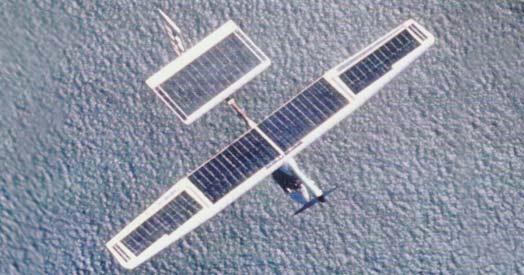
Solar Challenger
Aerovironment
5 Pathfinder-Centurion-Helios
Solar Challenger’s success inspired a classified NASA-Aerovironment programme called HALSOL, or High Altitude Solar, which from 1981 developed the unmanned flying wing as a huge solar panel host, to store power in fuel cells and drive multiple electric motors, aiming to demonstrate sustained solar-powered flight at 65,000ft or higher. From the early 90s, another NASA unmanned programme – ERAST, or Environmental Research Aircraft and Sensor Technology – picked up the concept, which ultimately envisioned virtually endless flights in the stratosphere. Pathfinder (wingspan 30m), Pathfinder Plus (36.7m), Centurion (63m) and later Helios (75.3m) all flew successfully. In 2001, a Helios aircraft set the world record for sustained horizontal flight by a winged aircraft, at 96,863ft. The fragility of these designs was illustrated in 2006, however, when another Helios flight ended in the sea – climbing through 2,800ft, air turbulence put the structure into a unexpected, persistent, high dihedral configuration; it snapped.
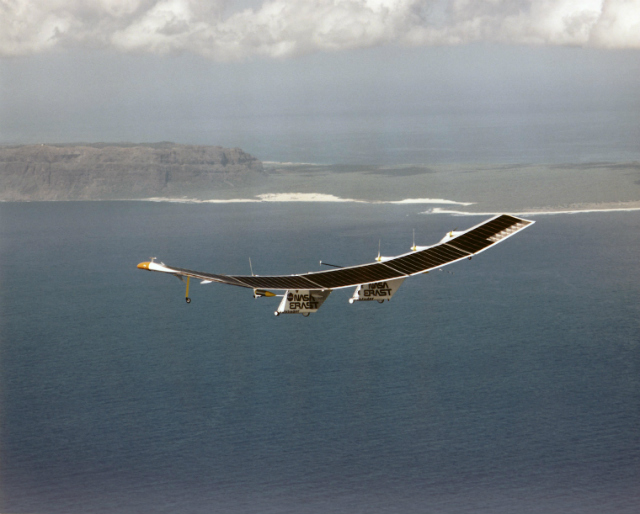
Pathfinder over Hawaii
NASA
6 Solar Impulse
The DNA of Gossamer Albatross, or certainly of Daedalus, can be seen in this Swiss-based project which aims, in its Solar Impulse 2 iteration, to fly round-the-world on solar power only. With its 72m wingspan (a Boeing 747-8I comes in at 68.5m), the single-seat SI2 is a triumph of modern materials and energy efficiency, weighing just 2,300kg – about the mass of a car and including 2,077kg of lithium batteries – and capable of virtually unlimited endurance, owing to its ability to charge its batteries during the day with enough power to fly through the night. Endurance is restricted to that of the pilot and the delicate craft must respect the weather, so the “RTW” trip will be run in 13 legs, from Abu Dhabi. The whole journey will take five months, at some points remaining airborne for a week at a time.
For pilots and programme founders Bertrand Piccard and André Borschberg, the multiple-leg itinerary is about more than keeping the effort inside their physiological limits, though. As they stress, the project is not really about aviation – it is about energy efficiency. That is, they hope that doing something very, very difficult illustrates that great things can be achieved, today, with existing technology. Stopping along the way and talking to people about it is, ultimately, the point.
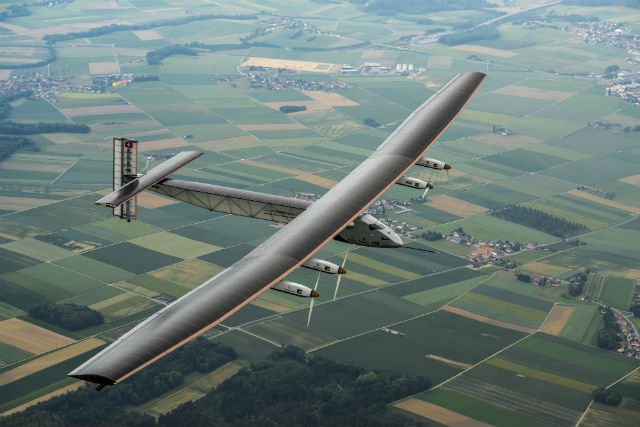
Solar Impulse 2
Solar Impulse
7 Sunseeker
Described by Wired magazine as “a battery-assisted semi-solar glider, really”, the Eric Raymond-designed Sunseeker – with small battery pack charged by solar cells – made the first solar-powered trans-USA flight in 1990. A later version toured Europe and crossed the Alps in 2009. Now, Raymond’s California-based company, Solar Flight, is developing a two-seat version. Raymond had worked with Paul MacCready, and the “team” page on his website includes Bryan Allen – MacCready’s pilot on Gossamer Condor and Albatross and, like Raymond, a gliding enthusiast. Also worth noting is that Raymond cites as his inspiration the German human-power pioneer Günther Rocholt, whose Musculair aircraft set world speed records.
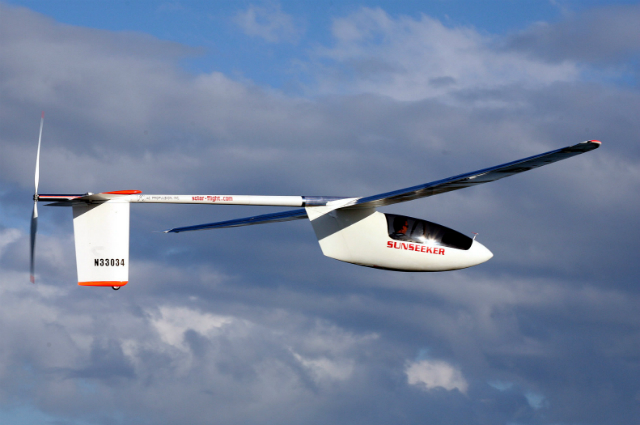
Sunseeker II
Solar Flight
Source: FlightGlobal.com






















